Classic Bo’Bo’ at the scrap yard – republished from iho.hu
“You should not become frightened: Kárpát Railways’ engine has just gone to work to Ereco in Kőbánya…”
“You should not become frightened: Kárpát Railways’ engine has just gone to work to Ereco in Kőbánya…”
There is not much to photo during the monotonous workdays of a line with dead-end tracks. In addition to the everyday solo Bz engine runs, three times a week Rail Cargo Hungaria operates freight services with a re-motorized Sergei.
On Wednesday, 15 Ks carriages were dispatched to carry the temporary platform having been erected in Székesfehérvár due to the reconstruction of the local station.
The usual track closure on line no. 142 of Budapest–Lajosmizse–Kecskemét has started. Earlier years similarly saw work in the summer seasons here.
From March Kárpát Railways is standing for port reserves and serving Paks when needed.
Just recently, Kárpát Railways’ Jenbacher gas engine was deployed both to the Dunaújváros port and Paks. Now, the reason has been unveiled: from the beginning of March the railway company took over one reserve unit of Dunaújváros, notably Sergei, from Start to run between the port and the Danube bank at Adony and serve some of the remaining runs to Paks from time to time. According to the plans, the area will be served by Kárpát Railways’ Ludmilla, which is currently under refurbishment in Sopron, still a traction solution for freight trains needs to be provided until the power engine becomes available. So on Friday, Kárpát made a debut in Dunaújváros with NOHAB no. 022. Probably, not all the people involved had a perfect night before that, but Gunhild did away the worries: she wonderfully pulled the coal-laden cars up from the port.
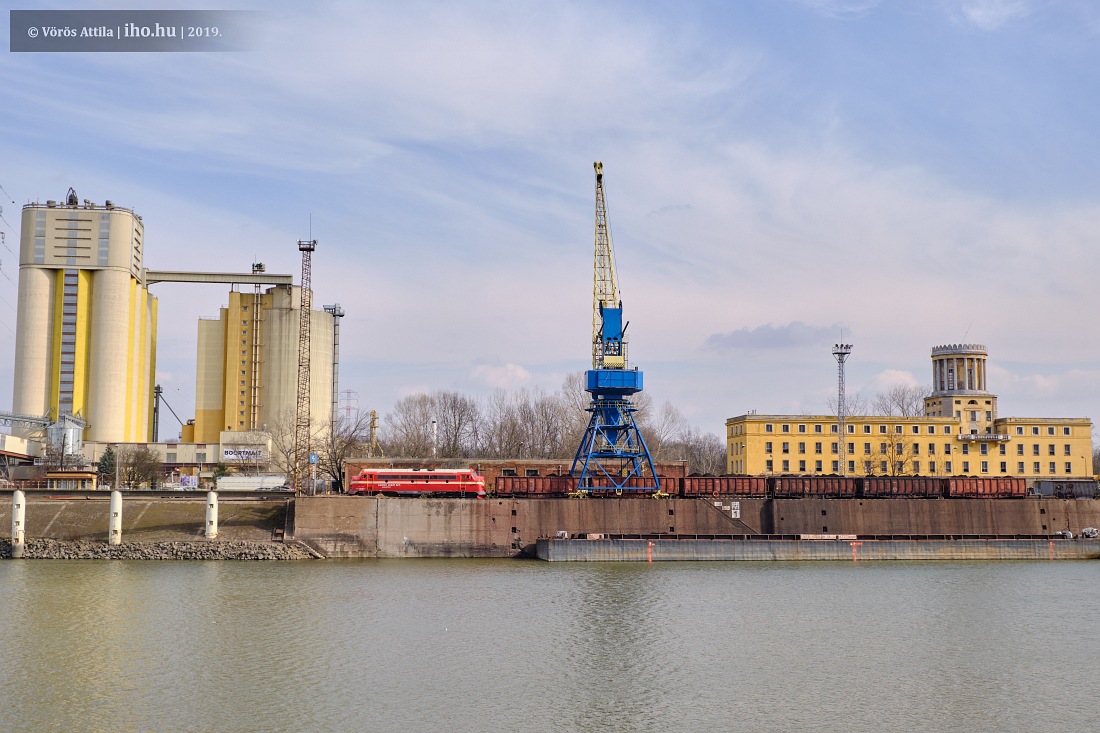
Shunt at the port
The railway station of Dunaújváros and the port are linked up along a continuously descending line. In the past, this line used to run into branch-offs to Szalkszentmárton and Kunszentmiklós with military pontoon bridges added from time to time. By now, the tracks needed to cross River Danube have been fully overgrown by forests both on the Dunaújváros and Szalkszentmárton side, while a section has in fact been removed, and consequently the port track has diminished into a simple industrial siding track. On the steep section, even Sergei engines with their six live axles dashed the tracks only with 11 loaded wagons – Gunhild was expected to show the same performance. The engine with four live axles has taken the hurdle, and wonderfully towed the coal-laden wagons in groups of 11 at the required 25 km/h speed.
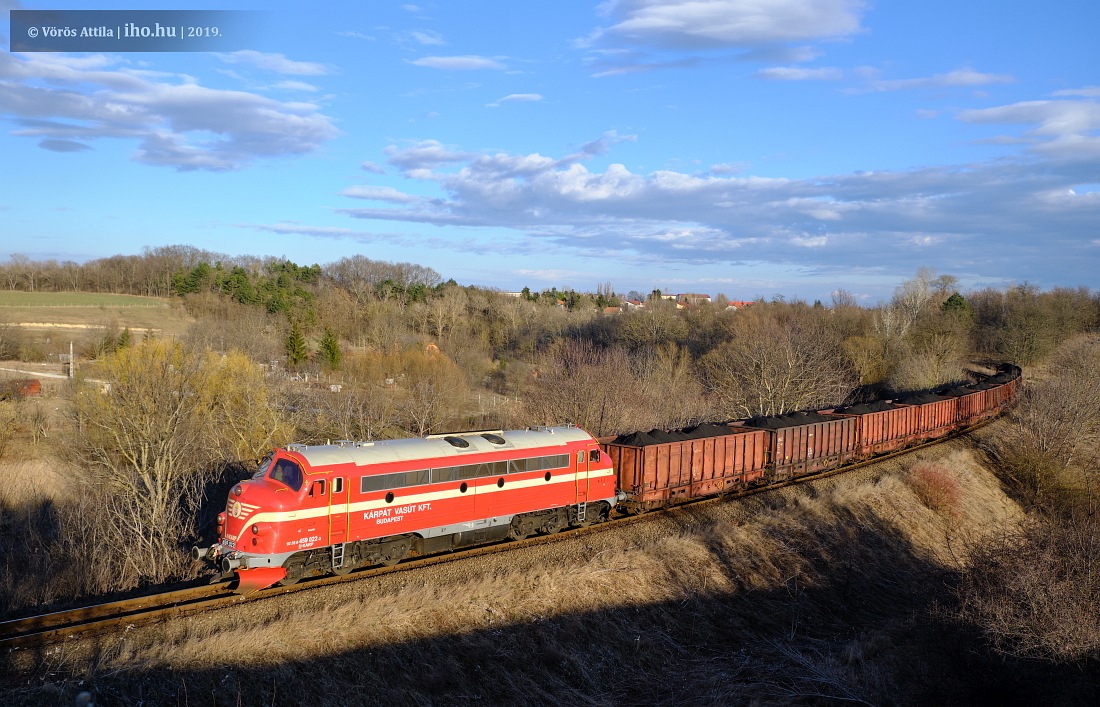
022 is climbing uphill with loaded coal wagons
My personal experience: the last time I heard this elemental, beautiful noise from the engine was on board of the very first Székely Express back in 2008; this is the sound that (at least partly) makes NOHAB locomotives so popular. At that time, the M61 no. 017 was pulling the 8-carriage set, and it did have the opportunity to show off its inherent power. Now, NOHAB no. 022 was in the same situation, and I almost fell from the tree when that magnificent locomotive with the coal train lumbered under me!
Traffic at the Dunaújváros port primarily consists of coal and ores arriving aboard ships, as well as steel coils released by the ironworks for loading. Although the port does not only supply the ironworks, still the largest volume belongs to that plant. In relation to life at the port, let us just offer our earlier article that was written on an open day when our photographer was allowed to enter everywhere to have a thorough insight.
Source: http://iho.hu/hir/hatalomatvetel-dunaujvarosban-190302
Written by Attila Vörös
There are plenty of railway enthusiasts in the country, which also holds true for Dunaújváros. They must have noticed that for some time now a legendary locomotive travels between the port on the banks of Danube and the ironworks: the Swedish engine, NOHAB.
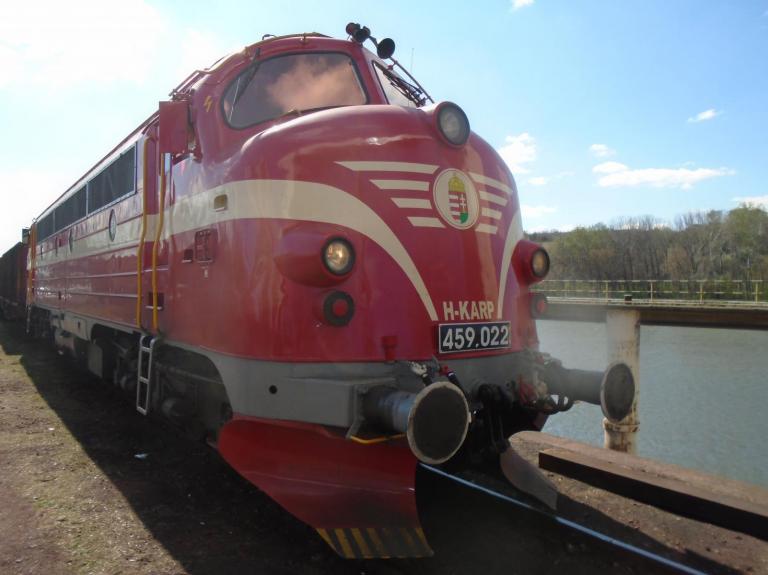
NOHAB was purchased by MÁV without Soviet permission
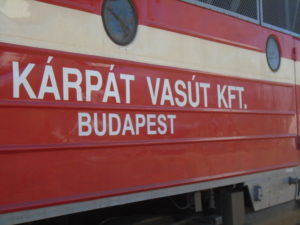
The NOHAB engine deployed in Dunaújváros arrived in the country in 2016
This vehicle is indeed surrounded by a legend, it makes puffs with beautiful noise, and can be regarded as the Rolls Royce of railway engines – explained Csaba Szentesi, Kárpát Vasút Kft’s managing director.
Our other partner in the conversation is Miklós Bükki, ISD Dunaferr Zrt’s deputy plant manager of the transportation unit.
– I have long-standing relationship with NOHAB, because as a diesel engine mechanic trainee I did participate in their servicing from 1975 until 1978. These locomotives were manufactured until 2000, but parts are made even today – told Miklós Bükki.
– Ours was manufactured in 1965; it took its trial run on 15 May in the same year, and arrived in Hungary in 2016. On the first of March this year, it was deployed to carry freight between the ironworks and the port in Dunaújváros – said Csaba Szentesi, who also revealed why NOHAB was so extraordinary.
– This is a universal locomotive, suitable for the carriage of freight trains, express trains and passenger trains alike, and was one of the first engines that could heat the wagons, too. Experts marvel at this locomotive, which also has a special place in our heart – stated Csaba Szentesi.
– Unfortunately, the NOHAB is remaining with us only for two more weeks, because we are in need of a stronger locomotive. Ours is the longest industrial railway track in Hungary, it spans ninety kilometers – added an important piece of information Miklós Bükki, vice-president of VAPE, the Association of Railway Track Users towards the end of our conversation.
NOHAB, MÁV’s M61 series diesel–electric locomotive is operated on main lines. It is nicknamed “NOHAB” after the name of the Swedish manufacturer, NOHAB. This type was last used in regular traffic, in Hungary on 21 December 2000. Six of the twenty locomotives are still operational. The locomotive serving in Dunaújváros is designated as M61-022, because it was not made for Hungary, and therefore it is not one of the legendary twenty engines.
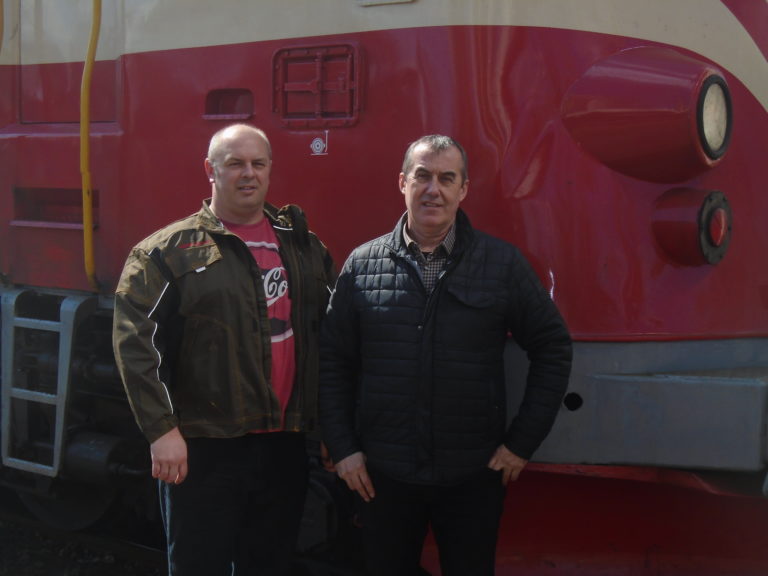
Csaba Szentesi (b) and László Bükki: Photos: Csaba Agárdy
MÁV purchased altogether 20
MÁV purchased altogether 20 of this kind of locomotives. In spite of the fact that the NOHAB factory was ready to manufacture and deliver further vehicles, the political circumstances at that time prevented their procurement. The Soviet leadership was in disfavour of letting a neutral country snatching the potential market from an ally, and while the Hungarian state had to pay the price for 25 engines, eventually received only 20 locomotives. Thereafter, MÁV had no choice other than to decide on purchasing the Soviet-made MÁV M62 series “Sergei” locomotives.
Source: https://www.duol.hu/vezeto-hirek/kultikus-mozdony-kozlekedik-a-kikoto-es-a-vasmu-kozott-2742487/